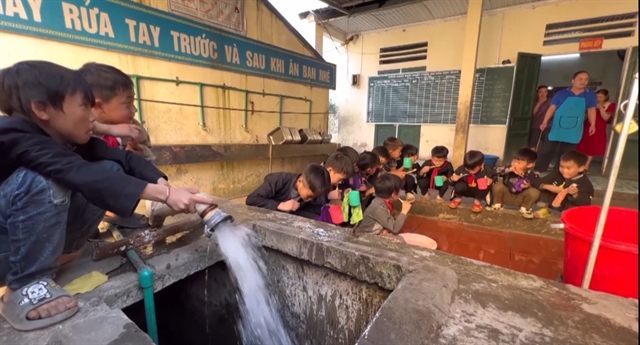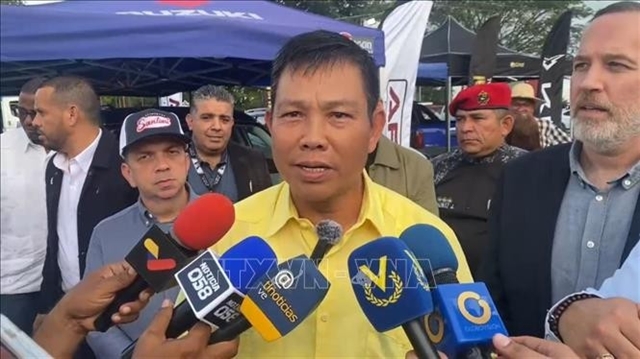 Society
Society

As water reservoir dry up, local people in Hà Giang's Thài Phìn Tủng Commune had to go for miles to a natural water source.

|
| A school in Đồng Văn District has to buy water from Yên Minh District for use. Photo hagiangtv.vn |
HÀ GIANG — In four districts of Hà Giang, namely Quản Bạ, Yên Minh, Đồng Văn and Mèo Vạc, there has been no rain for months, with sources of water and reservoirs empty.
Giàng Mí Sính, a resident of Thài Phìn Tủng Commune in Đồng Văn District, said: “In the past two months, when the commune’s water reservoir was empty, local people had to go for miles to a natural water source.”
“Despite having to queue from early morning, one could only get a can of water. Every day, an entire family could only get 20 litres of water.”
Many areas which rely on rainfall as a source of water have been put in a precarious situation as rainfall is not distributed equally.
Many areas suffer from very low rainfall, which leads to water scarcity. Water shortages have become more and more intense, especially in rural areas.
Since early this year, rainfall in many places has been lower than the average for many years. In some areas, there has not been any rain for months and prolonged heat has caused water scarcity in rural areas.
Water scarcity in these four districts has happened for many years.
With three quarters of this area made up of rugged cliffs and a small amount of forest, the water storage capacity is weak. Meanwhile, the high altitude also makes it hard for local people to exploit groundwater.
Water for domestic use, especially in the two districts of Đồng Văn and Mèo Vạc, come from the rainfed water reservoir. Hà Giang Province has started programmes and projects to provide domestic water for citizens, using support investment to build water reservoirs on a grand scale for families.
At the same time, lakes with volumes from 3,000 to 10,000 cubic metres will be built in areas with good conditions.
In these four districts, there are 121 man-made storage lakes built in mountainous areas to provide water for local communities and up to 10,000 water reservoirs in local households.
Giáp Mai Thùy, vice director of Hà Giang’s Department of Agriculture and Rural Development, said in 2011, the province planned water-storing lakes to solve the issue.
It set the target to build 400 lakes, which will basically meet the demand for water. However, only 121 lakes have been built, so the requirement has not been met for the dry season, especially for this year when drought is drawn out.
Hà Giang Province also seeks alternatives for water, including looking for groundwater in Mèo Vạc’s Pả Vi Commune. However, due to budget and management issues, this project is inefficient.
In 2019, in Đồng Văn District, the KaWaTech project (at Séo Hồ Village, Thài Phìn Tủng Commune, Đồng Văn District) was launched by Vietnam Institute of Geosciences and Minerals, Institute of Water and Basin Management - Water Resource Management and Environmental Engineering (Federal Republic of Germany).
The project helps to pump water up to Ma Ú mountain peak and provide 1,600 cubic metres of water per day for the entirety of Đồng Văn Town and adjacent areas.
However, due to rough terrain and technical issues, this model has not been popular.
Giáp Mai Thùy, Vice director of the province’s Department of Agriculture and Rural Development, said that the exploitation of surface water is still an efficient and long-term solution. In addition, locals are still developing projects to support people by building water reservoirs for families.
According to the National Strategy in Rural Water Supply and Sanitation by 2030, with a vision until 2045, Việt Nam targets to have 65 per cent of rural citizens access safely managed water supply and sanitation services by 2030 and 100 per cent of rural people access safe and sustainable clean water and sanitation by 2045. — VNS




